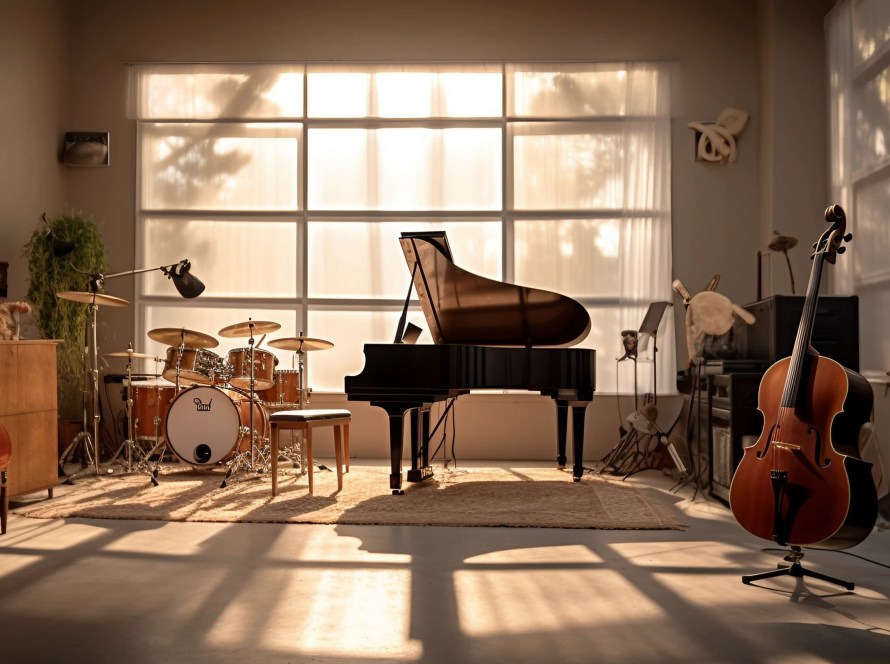How to Read Sheet Music for Beginners


When first learning how to read sheet music, many beginner music students may feel overwhelmed by the task. However, mastering this skill requires hard work and persistence. Luckily, there are several methods that can assist beginners in building confidence and improving their ability to read sheet music. In this article, we will discuss several strategies that can aid new learners in identifying notes and rhythms with greater ease.
Learn the Music Alphabet Fluently
When first learning music, it’s essential to understand the music alphabet. The music alphabet comprises the first seven letters of the English alphabet, namely A, B, C, D, E, F, and G. Knowing the order of these letters, both ascending and descending, is crucial to reading sheet music accurately.
In sheet music, each line and space on the staff represents a different note, with the letters of the music alphabet corresponding to specific notes. By understanding the music alphabet and the corresponding notes, musicians can quickly identify the notes in a piece of music and play them correctly.
For beginners, practicing the music alphabet in both directions, forward and backward, is crucial to enable reading sheet music in both directions. This practice also lays a foundation for understanding musical intervals, such as the distance between notes.
Using mnemonic devices, such as “Every Good Boy Does Fine” or “FACE” for the notes on the treble clef spaces, can be helpful in memorizing the order of the notes and their positions on the staff.
For novice music students, starting on a note other than A or recognizing the music alphabet in descending order can be challenging. Remembering the cyclical nature of the alphabet and starting from the note and continuing the order is essential.
To reinforce their understanding of the music alphabet, students can mentally practice the letter names consecutively going up or down the alphabet. Once confident, students can practice naming letter names in different ways, such as every other or third note, or using a different starting point each time. These exercises strengthen the recognition of notes in any order and help in reading sheet music fluently.
Concentrate on Learning One Clef at a Time
Understanding the treble and bass clef is essential for students learning to play piano. However, focusing on one clef at a time can be an effective approach to getting started. With regular practice, students can quickly gain confidence in reading both clefs.
Each clef symbol corresponds to a specific line on the music staff, indicating where specific notes are located. The treble clef, also known as the G clef, encircles the staff’s second line, which is the note G located above middle C. From this point, the notes on the treble clef staff continue consecutively with the music alphabet letters for each space and line found above and below the G note.
It’s worth noting that the treble clef is used to represent higher-pitched notes, typically played with the right hand on the piano. By learning to read the treble clef, students can identify notes on the upper half of the keyboard, providing a solid foundation for playing melodies and more complex pieces.
Understanding how to use the guide note indicated by the clef can be helpful for students when learning to read sheet music. The guidance note is the specific note that the clef symbol encircles, such as G for the treble clef or F for the bass clef. By identifying the guide note, students can easily determine the names of the lines and spaces on the staff.
At first, beginner students should focus on reading notes by step rather than trying to jump between larger intervals. However, with regular practice, they will soon be able to recognize skips and larger intervals.
Another approach to supplement notes recognition is to isolate line notes or space notes for each clef. This can be done through flashcards or other repetitive practice methods, helping to improve speed and fluency in reading sheet music.
Learning to read sheet music takes time and practice, but students can become proficient in treble and bass clef with patience and dedication. Students can build a strong foundation in reading sheet music and develop their piano skills by understanding the guide note and focusing on one clef at a time.
Study Note Values, Rests, and Rhythm
When learning to read music, it can be beneficial for students to practice clapping and counting rhythms separately before playing their instruments. This allows students to focus solely on the rhythm without worrying about playing the correct notes at the same time. By isolating rhythm practice, students can build confidence in their ability to recognize note values and rest within their sheet music.
Counting and clapping rhythms is a vital step in learning to read music, as it helps students develop a strong sense of timing and a deeper understanding of musical phrasing. It also allows them to internalize the rhythm, making it easier to play accurately when it is time to add the notes.
Learn all Other Music Notation
It is crucial for music students to be well-versed in the various markings that appear on sheet music, including dynamics, articulation, and other symbols specific to their instrument. By carefully examining all notations on a page and researching any unfamiliar symbols, students can develop a comprehensive understanding of the music they are playing.
One helpful habit is to review the sheet music beforehand and take note of all the markings, carefully studying each one while becoming familiar with the music. This approach helps students learn about the different symbols and comprehend how they relate to the music. Moreover, it is important for students to regularly revisit and review the markings and symbols in their sheet music, even after they have become comfortable with them.
Summary: Practice Concepts Separately, then Put It All Together
As discussed throughout this article, beginners can often learn more efficiently by breaking down the music reading process and practicing each element individually. Students can avoid feeling overwhelmed and build confidence in their abilities by focusing on one aspect at a time, such as note recognition, rhythms, or other musical symbols.
Repetition and consistent practice are also essential for success. By practicing these elements regularly, students can reinforce their learning and make progress more quickly. It is important to be patient and not get discouraged if progress feels slow at first. With time and practice, students will be able to put all the elements together and read music with greater ease.
In addition to practicing each element separately, it can also be helpful for beginners to work with a qualified music teacher who can provide guidance and support. A teacher can help students identify areas where they need more practice and can provide feedback and encouragement as they progress.
Overall, learning to read music can be a rewarding experience for beginners. By breaking down the process into smaller, manageable parts and practicing regularly, students can make steady progress and develop a strong foundation for their musical skills.


